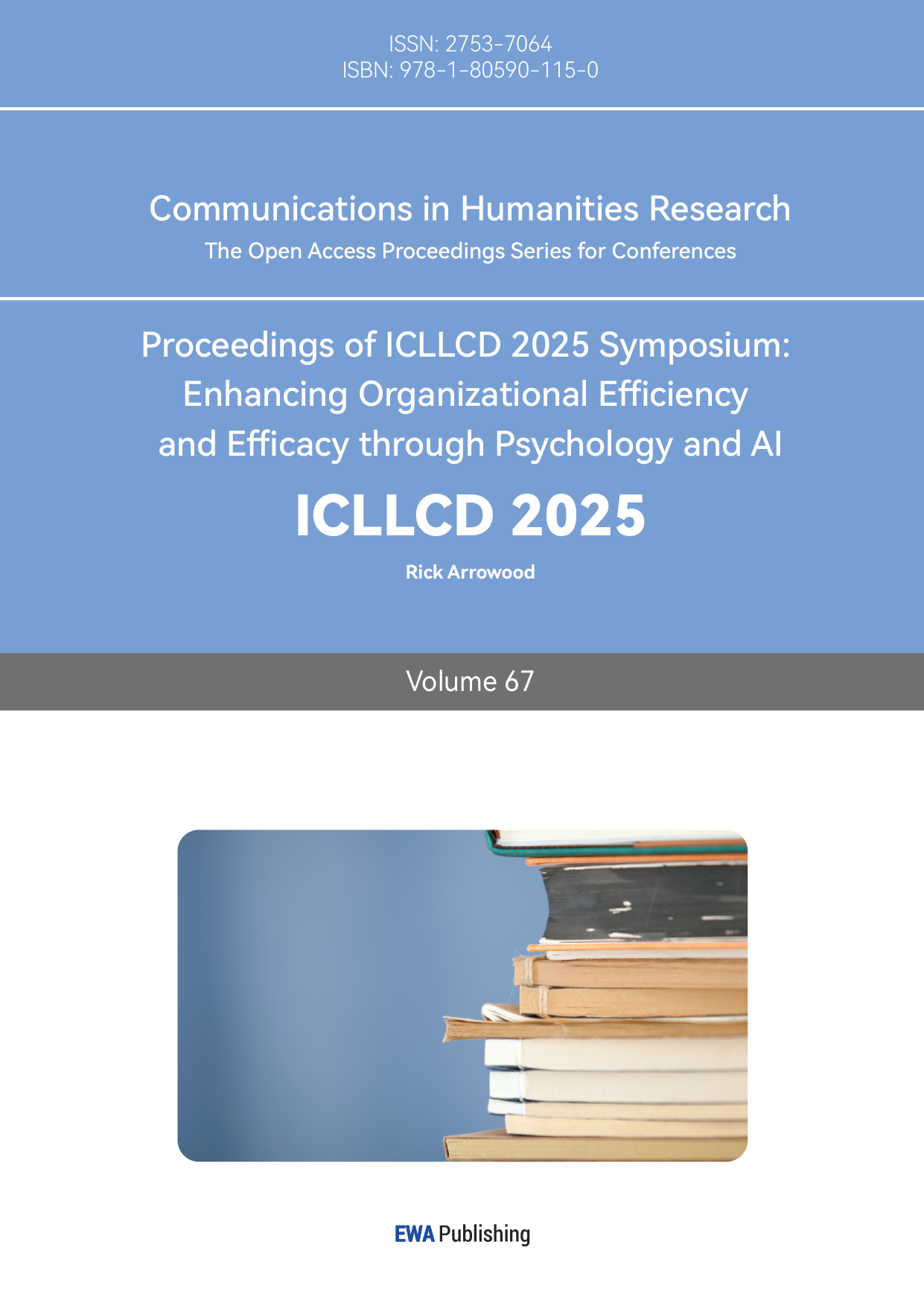1. Introduction
In The Language of New Media, Manovich emphasizes the pivotal role of "technology" in driving media convergence, stating that "new media represents the convergence of two separate historical trajectories: computing and media technologies."[1] Today, AIGC (Artificial Intelligence-Generated Content), grounded in this technological fusion, is revolutionizing digital content production at an unprecedented pace. From text and images to audio-visual content, the capabilities of AIGC large models continue to break through, exerting transformative effects on film and animation creation. In 2024, China’s first AIGC director co-creation initiative was launched on the Kuaishou platform, where nine directors, including Li Shaohong and Jia Zhangke, utilized the Keling AI to produce nine AI-generated short films across diverse genres and styles. Among these, the AIGC animated short film Goodbye Rabbit, directed by Wang Maomao, stands out as particularly noteworthy.
Goodbye Rabbit is an AIGC animated short centered on adolescent mental health, leveraging Keling AI to realize complex scenes and emotional atmospheres. The film takes academic pressure as its entry point, externalizing a boy’s inner anxiety through a fantastical journey. Symbolic elements like the "endless staircase" and "giant monster" metaphorize real-world pressures, while conveying the timeless themes of "love, understanding, and support." This exemplifies the potent expressive power of AIGC tools in animation creation. By analyzing the background and production process of Goodbye Rabbit, this paper explores the creative models through which AIGC empowers animated short films and its advantages for the animation industry. Additionally, the article critically examines challenges arising from AIGC-assisted creation, such as ambiguous authorship, aesthetic homogenization, and unresolved copyright ownership. The study aims to provide actionable insights for animation practitioners, researchers, and AIGC industry stakeholders.
2. Literature review
In recent years, AIGC technology has emerged as a focal point in both academic and industrial domains. Since OpenAI launched ChatGPT in 2022, the wave of AIGC has rapidly swept across the globe. AIGC has evolved from its early stage of auxiliary content creation to the current phase of autonomous AI-generated content production [2]. With continuous breakthroughs in large-scale model technology, AIGC's application capabilities in fields such as media and finance have progressively advanced, demonstrating a thriving "AIGC+" trend [3].
As a technology-intensive industry, the film sector has been profoundly impacted by AIGC development. AIGC drives the digital and intelligent transformation of the film industry, further bridging the gap between the Internet of Things and ubiquitous media, and catalyzing a monumental shift in cinematic production [4]. In the realm of animated short films, existing studies highlight that visual foundation models and tools represented by Keling AI are gradually becoming new infrastructure for the visual arts, significantly enhancing production efficiency in areas such as character design, storyboarding, and scene modeling. Traditional animated shorts, having evolved over a century from experimental fragments to mature feature-length productions, transitioned from hand-drawn techniques to advanced computer-generated 3D animation and visual effects [5]. Today, AIGC not only elevates animation production capabilities but also expands creative possibilities, enriches imaginative spaces, and enhances interactive and expressive dimensions in animation creation [6].
Despite existing research addressing AIGC's technological applications and industrial prospects, systematic studies specifically focusing on AIGC-empowered animation short film creation models remain scarce. In particular, analyzes of human-AI collaboration mechanisms during the animation production process and discussions on their inherent challenges are notably underdeveloped. Therefore, based on the case study of Goodbye Rabbit, this paper aims to address these research gaps by exploring practical experiences and reflections on AIGC-driven animation creation, while offering insights into future directions for AIGC in the animation industry.
3. Analysis and results
3.1. Application modes of AIGC in the creation of Goodbye Rabbit
3.1.1. Pre-production planning
Goodbye Rabbit was collaboratively created by director Wang Maomao, a Beijing-based animation team, and an overseas AI film production team. The conceptual design, animation, and composition were accomplished using AIGC technology, while post-production involved compositing and refining through visual effects.
During the pre-production planning phase, the creative team utilized AIGC tools to assist in structuring the narrative and deepening thematic exploration. Centering on keywords such as “academic pressure,” “psychological struggles,” and “growth and redemption,” the team employed Keling AI to generate foundational plot frameworks and multiple storylines. Notably, the AI demonstrated surprising depth in thematic development.
The short film depicts a fantastical “descent into the abyss” through a boy’s encounter with a colossal beast, visually externalizing the psychological pressures faced by children in modern society. The intertwining of the protagonist’s emotional breakdown and his fantastical journey serves as a metaphor for the tension between societal demands and inner turmoil. In an era where individuals confront escalating challenges from childhood, psychological burdens linger like shadows, pushing some toward the abyss of depression. AIGC-driven creative design enabled the director to articulate the theme that “love, understanding, and support represent an enduring human legacy across generations,” thereby elevating the film’s core message.
Throughout this process, AIGC primarily functioned as a “creative assistant.” By analyzing and reorganizing vast textual datasets, the AI model provided the team with diverse story settings and narrative trajectories, effectively expanding the boundaries of screenwriting creativity.
3.1.2. Visual design
In the visual design process of Goodbye Rabbit, AIGC image generation technology was extensively utilized to explore conceptual design iterations, simulate visual styles, shape character profiles, and construct symbolic imagery across multiple dimensions. Director Wang Maomao highlighted that Keling AI’s resolution and dynamic performance were particularly commendable. The use of AI video tools empowered the creative team to experiment boldly with visual aesthetics and metaphorical representations, significantly transcending the limitations of traditional animation production.
Many scenes in the short film—such as the protagonist Zhibo falling into the abyss while descending stairs, traversing a cosmic ocean into a pulsating heart, wandering through a haunting forest, and fleeing from a colossal serpent—originated from preliminary image designs generated by AIGC models. These AI-driven visuals ultimately replaced live-action footage, crafting a surreal virtual world rich in psychological symbolism.
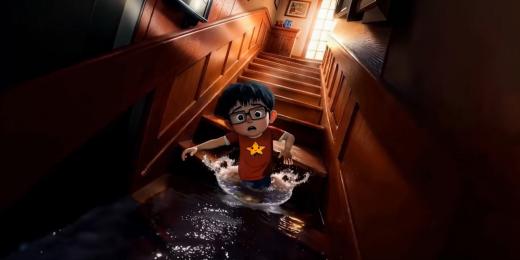
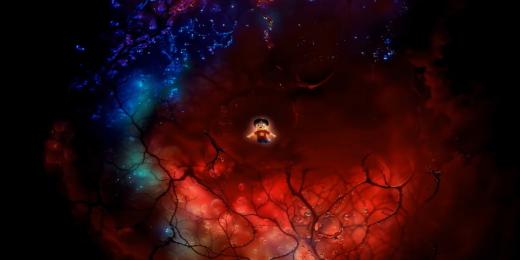
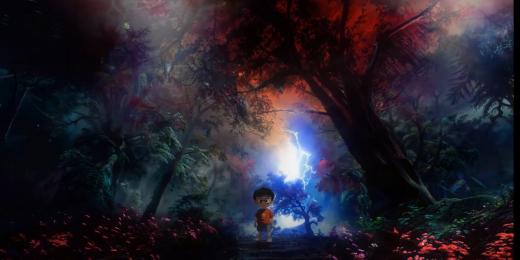
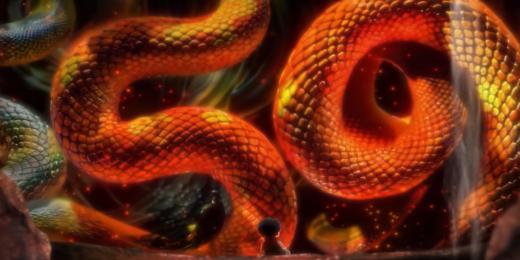
Figure 1: Screenshots from the AIGC animated short film Goodbye Rabbit
AIGC enabled the team to explore boundless imaginative spaces, translating abstract concepts into concrete visuals with precision. This approach heightened the film’s immersive quality and emotional resonance. Notably, in color palettes, lighting effects, and atmospheric rendering, AIGC demonstrated exceptional generative capabilities. The director’s team simply input desired scenes and styles into Keling AI, leveraging its large language model to refine and enhance the creative vision. Concurrently, predefined keyframes ensured the narrative and emotional coherence of each audiovisual sequence, aligning every frame with the film’s overarching tonal palette.
At this stage, AIGC markedly improved the efficiency of visual design workflows, expanded the exploration of artistic styles, and established a visual language system imbued with dreamlike qualities and psychological symbolism.
3.1.3. Production process
During the animation production phase, AIGC technology was further integrated into character animation generation and dynamic scene construction, meticulously crafting fantastical scenarios such as character movements, camera transitions, and environmental interactions.
Key dynamic sequences in Goodbye Rabbit—including the protagonist’s “staircase descent,” “serpent pursuit,” “monster confrontation,” and “memory disorientation”—were dynamically generated and rendered through AIGC algorithms. The Keling AI model achieved high-precision motion simulation via training data, enhancing the emotional authenticity and fluidity of character interactions with their environments.
A standout example is the “melting staircase” sequence. Guided by creator prompts, AIGC exceeded expectations in dynamic expression: the protagonist Zhihuo, clutching a failing grade report, descends the stairs under immense psychological pressure. Each step metaphorically plunges him deeper into an abyss, culminating in the staircase dissolving into a liquid void. This visual metaphor powerfully amplifies the film’s psychological tension and artistic impact, externalizing internalized anxiety.
Similarly, the “serpent pursuit” scene showcases AIGC’s capabilities in motion simulation and cinematographic computation. The synchronized chase between the boy and the serpent—depicting the child’s stumbling panic juxtaposed with the creature’s relentless advance—demonstrates precise environmental interactivity and seamless motion continuity, vividly conveying visceral fear.
At this stage, AIGC significantly accelerated animation generation speed and refined detail accuracy, substantially reducing reliance on manual labor and time-intensive processes inherent in traditional animation workflows.
3.1.4. Post-production optimization
In the post-production phase of Goodbye Rabbit, AIGC technology was further leveraged for clip refinement and audio-visual synchronization. As evident in the film, the narrative rhythm is meticulously crafted through dynamic pacing—alternating between intense action and contemplative stillness—achieved via AI-assisted editing that aligns visual transitions with emotional arcs.
Specifically, AIGC algorithms automatically analyzed the short film’s pacing and emotional turning points, optimizing shot sequencing and temporal flow. This ensured seamless integration of the film’s dramatic peaks and valleys, resulting in a tightly structured emotional progression.
Keling AI’s intelligent sound design system played a pivotal role in enhancing thematic immersion. Preconfigured with the film’s emotional tone, the AI generated diegetic sounds (e.g., the mother’s urgent calls, creaking stairs, splashing waves) and non-diegetic elements (e.g., thunderclaps in the forest, serpentine footfalls) that precisely amplified psychological tension. Such automated audio synthesis allowed the director to focus on nuanced narrative expression rather than technical execution.
Additionally, AIGC executed critical technical enhancements, including frame-by-frame detail restoration, color grading, and lighting optimization. These processes elevated the film’s overall visual fidelity, exemplifying the profound integration of human-AI collaboration in contemporary animation production.
3.2. Advantages of AIGC in animation short film creation
3.2.1. Lowering creative barriers
AIGC technology significantly reduces entry barriers for animation short film creation. By leveraging existing data and algorithmic models to generate content aligned with predefined standards, AIGC enables creators without specialized technical backgrounds to participate in animation production. Technically, AIGC utilizes deep learning and Generative Adversarial Networks (GANs) to autonomously produce textual, visual, and auditory content—including character design, scriptwriting, scene illustration, art direction, cinematography, sound design, music composition, and post-production effects—thereby completing an end-to-end creative workflow. Traditional animation production has long relied on large teams and faced challenges of high costs and prolonged timelines in visual effects creation. AIGC addresses these pain points by enhancing production efficiency, reducing labor and time expenditures, and ushering content creation into a highly automated era. Small-scale teams can now achieve production quality comparable to traditional large studios using AIGC tools, democratizing animation creation by diminishing reliance on specialized expertise.
3.2.2. Enhancing production efficiency
AIGC generates content at high speed and with short iteration cycles, dramatically improving the efficiency of animated short film production. For example, in the case of the micro-drama Shan Hai Qi Jing: Riding the Waves on Kuaishou, all scenes were produced using text-to-video and image-to-video generation technologies, with production costs reduced to merely one-third or one-fourth of traditional micro-drama costs, and with a production crew only one-tenth the usual size. Even earlier, the experimental AIGC short A Millennium Promise with the White Fox was created by a team of just four people within less than two months.
With the incorporation of AIGC, creative teams are able to deliver higher-quality works within limited timeframes and respond swiftly to market demands. AIGC automates complex stages such as concept design and animation rendering, enabling creators to achieve refined visual effects in a short period of time. For instance, in the short film Daisy, director Wang Zichuan explored the theme of human-technology integration, using Keling AI to generate dynamic scenes such as explosions, collapses, and tornadoes—visual effects that would be difficult to achieve through traditional filming.
3.2.3. Enriching audio-visual imagination
In her creative notes, director Wang Maomao remarked, "Rather than calling the emergence of AI a revolution, it is more accurate to call it an evolution—a reflection of our continual push toward the boundaries of innovation. For creators, new technologies give wings to good ideas. Instead of doubting them, we should embrace them early and benefit from them." The integration of AIGC technology breaks through the physical limitations of traditional animation production, granting greater freedom to audiovisual language.
In Goodbye Rabbit, the director sought to simulate deep-seated human memories and emotions through AIGC-driven creation, translating abstract psychological pressures into visual elements such as the giant monster and endless staircase. This combination of abstraction and fantasy is something that traditional animation techniques struggle to achieve with ease. Moreover, AIGC’s pioneering capabilities in constructing futuristic settings and unique character designs have made domestic animated short films increasingly diverse in theme. For example, The Fantasy Store explores the genre of sci-fi and cute creatures; AI Reads the Classics focuses on traditional literature; and Shan Hai Qi Jing: Riding the Waves conveys elements of Eastern mythology with images of surging waves and spiraling dragons.
AIGC offers creators a broader range of innovative tools, making visual design more diversified and capable of breaking through real-world constraints. It enables the creation of surreal effects imbued with dreamlike and fantastical atmospheres—so long as we possess sufficient imagination and the ability to provide rich content inputs.
3.2.4. Providing customized experiences
One of the core advantages of AIGC technology in the production of animated short films lies in its high adaptability to user needs. Through data mining and deep learning algorithms, AIGC can accurately analyze user preferences based on command inputs and dynamically adjust content generation parameters. This allows for precise tuning of visual style, plot development, and sound design, achieving refined, personalised creative expression and a tailored creative experience.
In addition to Goodbye Rabbit, many AIGC-powered shorts—such as Sunspring—employ AIGC tools to generate scripts and dialog. During these processes, AIGC adjusts plotlines and character speech based on the director’s stylistic requirements, quickly producing shots and conflict scenes that align with the intended tone. This customisable creation process enables creators to precisely control the content and style of their work. Even those without a screenwriting background can generate creative scripts and material using simple commands.
Through this personalised creative model, creators can quickly realize their artistic visions and creative goals within a short timeframe. Furthermore, AIGC provides rhythm adjustments through shot calculation, offering delicate modulation of emotional fluctuations in short films and ensuring that each shot pushes the narrative forward with just the right intensity.
4. Discussion
4.1. Is AI an “assistive creator” or an “independent creator”
The rapid development of AIGC technology has improved the efficiency of animated short film production and expanded creative possibilities. However, this also prompts reflection: how should we address increasingly homogenised content, and how should authorship of AIGC-generated content be defined? What role does AIGC truly play in the creative process—assistive creator or independent creator? This remains a matter of ongoing debate.
Currently, there are two prominent modes of AIGC application in animated short film creation: as an assistive creator and as an independent creator. These two modes coexist, representing not only technological choices but also a philosophical inquiry into the definition of creation itself. As an assistive creator, AIGC can enhance productivity and inspire creativity; as an independent creator, it may redefine the boundaries of artistic authorship and prompt a reevaluation of the identity of human creators.
In the creative practice of Goodbye Rabbit, AIGC functioned consistently as a tool of assistance. Its output remained dependent on human input and supervision. AIGC acted merely as an executor and assistant, while human creators retained control over aesthetic judgment and value expression. Thus, at the current stage, AIGC lacks the capacity for truly independent creation and should be viewed as an augmented tool that supports human inspiration and expressive intent.
In fact, the concept of human-AI co-creation has permeated all aspects of film production. We are witnessing how this mode of collaboration enhances efficiency and enables two-way interaction, greatly enriching creative methods in filmmaking. However, we must also recognise that as human-AI co-creation deepens, we are increasingly faced with challenges such as homogenised aesthetics diminishing artistic individuality and formulaic output lacking lived experience. Addressing these issues requires collective effort from all stakeholders to construct a new, dynamic framework for Chinese film and television production that is continually empowered by innovation [7].
4.2. How can we address aesthetic convergence in AIGC
At this stage, AIGC technologies typically rely on large volumes of existing data for simulation and computation. As a result, the content generated by AIGC is often limited by the scope and biases of its training data. If the training data is overly homogeneous or strongly biased, the generated content may tend toward aesthetic convergence—i.e., an excessive repetition of styles, forms, and elements, leading to a lack of innovation and diversity. This risks falling into the trap of AI templating.
For instance, in the Chinese Mythology series broadcast by CCTV Video, chapters such as Mending the Sky, Chasing the Sun, and Controlling the Waters feature environmental scenes with many visual similarities—vast skies and surging seas appear repeatedly, resulting in highly similar visual effects. In terms of character generation, once characters begin speaking, they often lose natural facial expressions and gestures. There are also issues such as insufficient subtlety, poor continuity, and distorted complex movements.
Director Wang Zichuan has pointed out that AI-generated material needs to be refined through manual storyboarding and editing. Enhancements such as increasing the information density of static shots and adapting to a rapid editing style help reduce the overly artificial feeling commonly associated with AI-generated works. In addition, when training AI models, it is essential to incorporate a wide range of artistic styles from different cultural backgrounds, artistic schools, and historical periods to ensure the models learn diverse methods of expression.
Of course, human intervention remains crucial in the AIGC creative process. By incorporating emotional nuance, cultural context, and aesthetic judgment from human creators—followed by continual revision, adjustment, and refinement—the final works are better aligned with human aesthetic standards. For example, director Jia Zhangke, in creating his first AIGC-powered animated road film, mentioned the difficulty in locking down consistent character appearances and transitions. However, through team-based optimization and the use of traditional storyboard methods, his film Mai Shou achieved coherent narrative flow throughout.
4.3. How should copyright ownership of AIGC-generated content be handled
The issue of copyright ownership for AIGC-generated content has become a focal point of discussion in legal and industrial circles. At present, most legal systems have not clearly established whether AI-generated content can be recognised as a "work" eligible for copyright protection. Currently, the prevailing view is that copyright belongs to the human creator who inputs the instructions and controls the creation process. However, since AIGC model training relies on vast amounts of data—often sourced from original copyrighted works—there are inherent risks of copyright infringement. Copyright ownership of generated content may involve multiple stakeholders, including model developers, data providers, and content creators. Thus, clarifying each party’s contributions and rights is crucial for defining ownership.
In this context, AIGC platforms bear significant responsibility regarding copyright. Their duties extend beyond providing technical support for content generation; they also include oversight and management of content publication and distribution. For example, the safe harbour provision in the U.S. Digital Millennium Copyright Act (DMCA) offers limited liability protection to platforms. Nevertheless, contracts between platforms and creators must clearly define the allocation of rights to prevent future disputes.
Moreover, for users employing AIGC tools in their creative work, protecting their copyright is equally important. For instance, Huihuo Comics Studio in Guangdong, which created the AIGC-driven animated short film Grass Hat Anti-Japanese Corps, placed strong emphasis on copyright protection to ensure the legality of AI-generated content. Therefore, creators should understand and comply with relevant laws and regulations, and register their work for copyright protection when necessary.
In the future, it will be essential for national legislation to improve the AIGC copyright framework, clearly define standards for ownership of AI-generated works, and raise awareness among both creators and consumers. Only through collective efforts can the legitimate rights of both human creators and AI tool providers be safeguarded—laying a solid foundation for the healthy development of AIGC technology and the creative industries it empowers.
5. Conclusion
As a representative case of AIGC-empowered animated short film creation, Goodbye Rabbit demonstrates the tremendous potential and practical significance of human-AI co-creation. AIGC technology enhances cost-effectiveness and efficiency across the entire creative workflow—from early planning and visual design to production and post-optimization. It supports creators in expanding audiovisual imagination and enriching narrative expression, thereby accelerating the transition of the animation industry toward intelligent content creation.
Looking to the future, AIGC is expected to continue deepening the human-AI co-creation model and promoting the collaborative development of creators and AI technologies. By optimising human-AI interaction, enhancing creative controllability, and improving regulations on copyright and ethics, AIGC can become a vital force in animated short film production. This would lead to a new phase in film and television content creation, where artistic innovation and technological advancement are deeply integrated.
That said, while this study provides a valuable perspective on the application of AIGC in animation production, it is limited in scope—focused on a single case and not yet able to cover all applications or conduct an in-depth analysis of broader socio-cultural impacts. Future research should continue to explore how AIGC affects creation models, artistic expression, ethical considerations, and copyright ownership, thereby contributing to the continued evolution of this emerging field.
References
[1]. Manovich, L. (2021). The Language of New Media (Che Lin, Trans.). Guizhou: Guizhou Publishing Group.
[2]. Guo Quanzhong and Zhang Jinyi. (2023). AI + Humanities: The Development and Trends of AIGC. News Enthusiast, (03), 8–14.
[3]. Sun Shouqian, Luo Lingying and Qiao Xianyue. (2024). New Driving Forces and Paths of AIGC Empowered Creative Design. Art and Design Research, (02), 69–76.
[4]. Su Tao and Wang Chenxu. (2024). Collaboration, Innovation, and Integration: Intelligent Transformation of the Film Industry Driven by AIGC. Film Review, (14), 8–14.
[5]. Shen Yufeng. (2012). The Creation and Study of Animated Short Films. Mangzhong, (04), 218–219.
[6]. Huang Jun. (2023). Application of AIGC Technology in Animation Creation. Toy World, (05), 54–56.
[7]. Zhang Huigang, Zhang Yue and Ma Nian. (2024). Symbiosis, Risks, and Complementarity: A New Development Pattern of China’s Film and Television Industry Empowered by AIGC in the Era of Intelligent Media. China Television, (05), 86–93.
Cite this article
Gao,G. (2025). Modes and Challenges of AIGC-Empowered Animation Short Film Creation —A Case Study of Goodbye Rabbit. Communications in Humanities Research,67,30-37.
Data availability
The datasets used and/or analyzed during the current study will be available from the authors upon reasonable request.
Disclaimer/Publisher's Note
The statements, opinions and data contained in all publications are solely those of the individual author(s) and contributor(s) and not of EWA Publishing and/or the editor(s). EWA Publishing and/or the editor(s) disclaim responsibility for any injury to people or property resulting from any ideas, methods, instructions or products referred to in the content.
About volume
Volume title: Proceedings of ICLLCD 2025 Symposium: Enhancing Organizational Efficiency and Efficacy through Psychology and AI
© 2024 by the author(s). Licensee EWA Publishing, Oxford, UK. This article is an open access article distributed under the terms and
conditions of the Creative Commons Attribution (CC BY) license. Authors who
publish this series agree to the following terms:
1. Authors retain copyright and grant the series right of first publication with the work simultaneously licensed under a Creative Commons
Attribution License that allows others to share the work with an acknowledgment of the work's authorship and initial publication in this
series.
2. Authors are able to enter into separate, additional contractual arrangements for the non-exclusive distribution of the series's published
version of the work (e.g., post it to an institutional repository or publish it in a book), with an acknowledgment of its initial
publication in this series.
3. Authors are permitted and encouraged to post their work online (e.g., in institutional repositories or on their website) prior to and
during the submission process, as it can lead to productive exchanges, as well as earlier and greater citation of published work (See
Open access policy for details).
References
[1]. Manovich, L. (2021). The Language of New Media (Che Lin, Trans.). Guizhou: Guizhou Publishing Group.
[2]. Guo Quanzhong and Zhang Jinyi. (2023). AI + Humanities: The Development and Trends of AIGC. News Enthusiast, (03), 8–14.
[3]. Sun Shouqian, Luo Lingying and Qiao Xianyue. (2024). New Driving Forces and Paths of AIGC Empowered Creative Design. Art and Design Research, (02), 69–76.
[4]. Su Tao and Wang Chenxu. (2024). Collaboration, Innovation, and Integration: Intelligent Transformation of the Film Industry Driven by AIGC. Film Review, (14), 8–14.
[5]. Shen Yufeng. (2012). The Creation and Study of Animated Short Films. Mangzhong, (04), 218–219.
[6]. Huang Jun. (2023). Application of AIGC Technology in Animation Creation. Toy World, (05), 54–56.
[7]. Zhang Huigang, Zhang Yue and Ma Nian. (2024). Symbiosis, Risks, and Complementarity: A New Development Pattern of China’s Film and Television Industry Empowered by AIGC in the Era of Intelligent Media. China Television, (05), 86–93.





